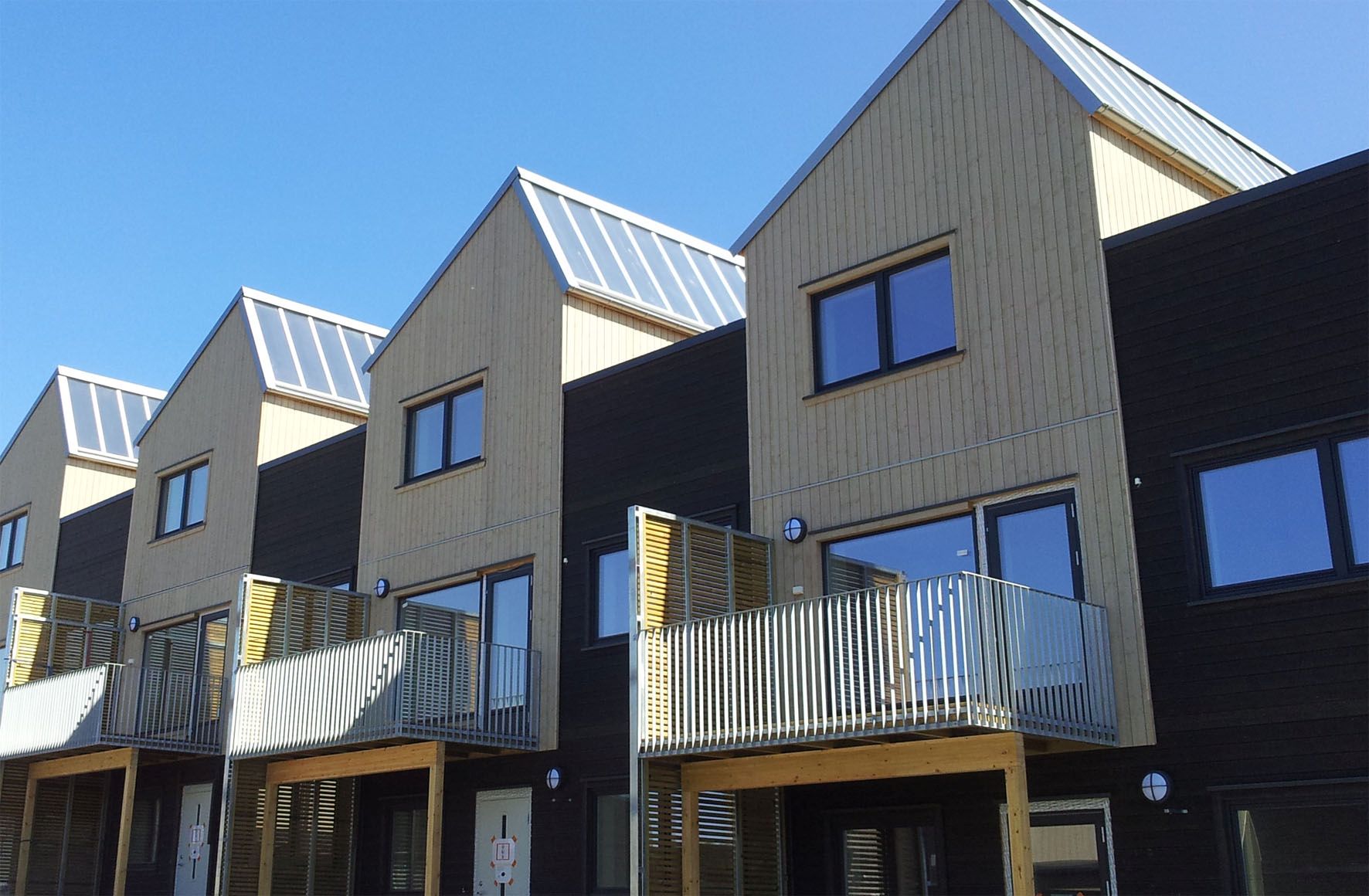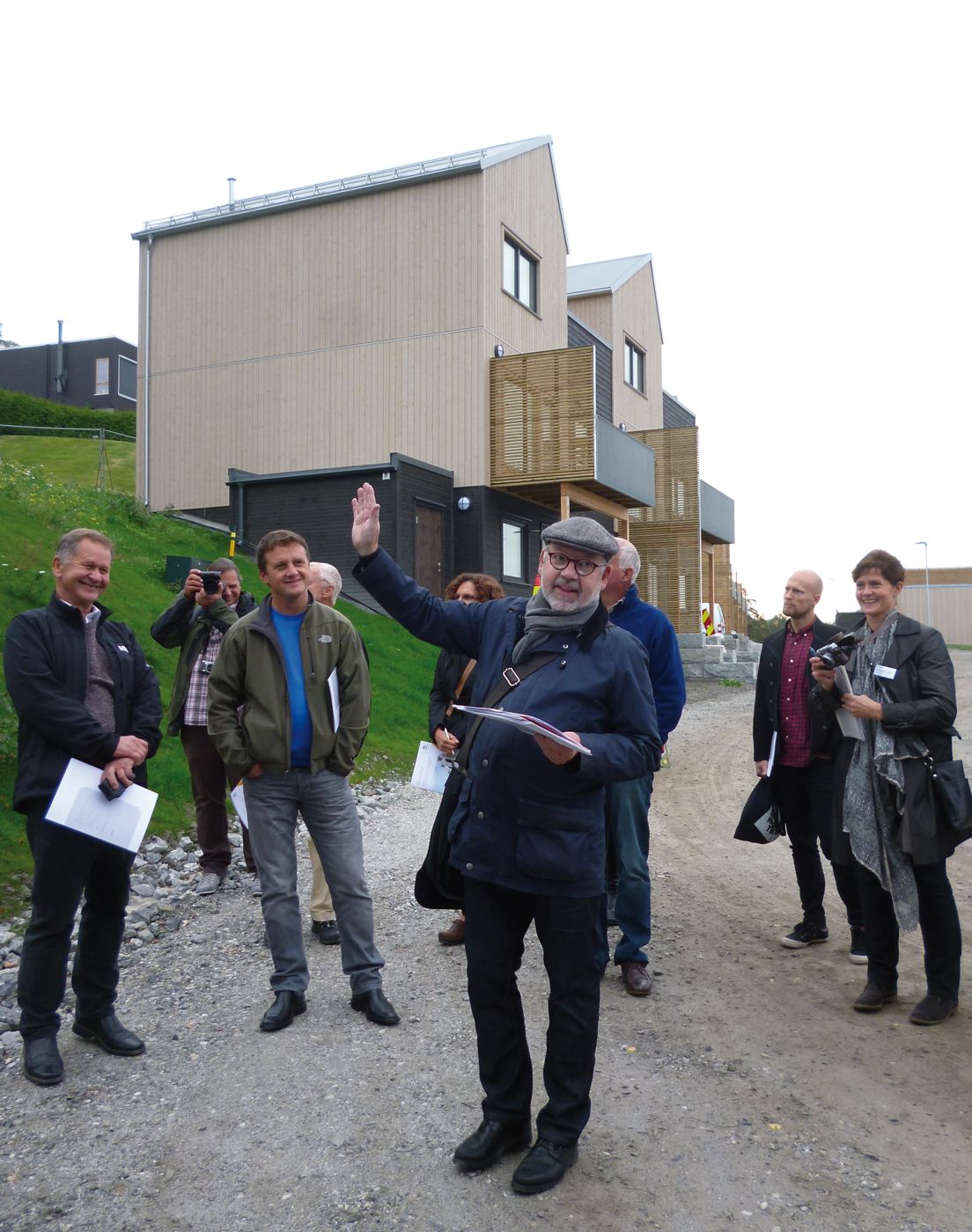Presse Release #22
Innovation under the Scandinavian Sun – Building Integration of Polymeric Solar Collectors Demonstrated
In the joint European project “SCOOP” (Solar COllectors Made Of Polymers), a consortium, led by the Fraunhofer Institute for Solar Energy Systems ISE, has developed polymeric solar collectors that combine functionality, cost efficiency and aesthetics. The solar demonstration system of the project partner Aventa meets over 60 percent of the hot water and space heating demand for the 34 terraced houses, which are built to passive house standards. The new heating system was presented to the public in October 2014.


In Mortensrud near Oslo, the consortium, made up of research and industry, has achieved a milestone in the development of polymer solar collectors. In the housing estate ”Stenbråtlia” of the cooperative building association OBOS, polymeric solar collectors from the Norwegian company Aventa are installed on the south-facing roofs of the terraced houses. Sixty-two per cent of the total energy consumption for both heating and hot water are supplied by the polymeric solar collectors. The model housing estate for energy-efficient building became a benchmark project for the solar and building sectors, fulfilling the aspirations of both architects and building owners. “The housing estate demonstrates that comfortable indoor climate, renewable energy and aesthetic design can be successfully brought together,” remarks Egil Wahl, OBOS project leader for the building stage during the technical tour. For the company's architect Hans Dahl, the estate represents “the future of sustainable building projects, in which solar collectors merge with the building envelope,” offering not only energetic advantages but visual appeal as well. Dahl was responsible for the project in the early stage and for implementing the use of solar energy as the primary energy source for heating. In his opinion it is vital that “the solar collectors can be integrated in an aesthetic way.“ How this can be done is shown quite perfectly by the newly built houses. Mounted on each house are fourteen square meters of polymeric solar thermal collectors based on extruded twin wall sheets. Equipped with an 800 liter storage tank, the collector system provides the heat for both the domestic hot water and the space heating, which is distributed using a water-based underfloor heating system. The systems are simple and require a relatively small amount of manpower to install. This is another advantage of the polymeric construction.
“With the solar systems at ‘Stenbråtlia,’ we can demonstrate that aesthetics and cost efficiency are compatible,” explains Michael Köhl, Team Leader at Fraunhofer ISE and project leader of the EU project “SCOOP.” “Research results over the past years have shown that polymer materials are very suitable for the construction of future-oriented solar collectors. Now we are able to prove this in the practice.” Besides guests from the Norwegian building and architecture sectors and the joint partners of the EU project “SCOOP,” members of the IEA SHC Task 39 “Polymeric Materials for Solar Thermal Applications” were also present during the first official visit of the site. Over many years, the members of the IEA Task 39 have decisively advanced the R&D of polymer solar collectors.
Last modified: